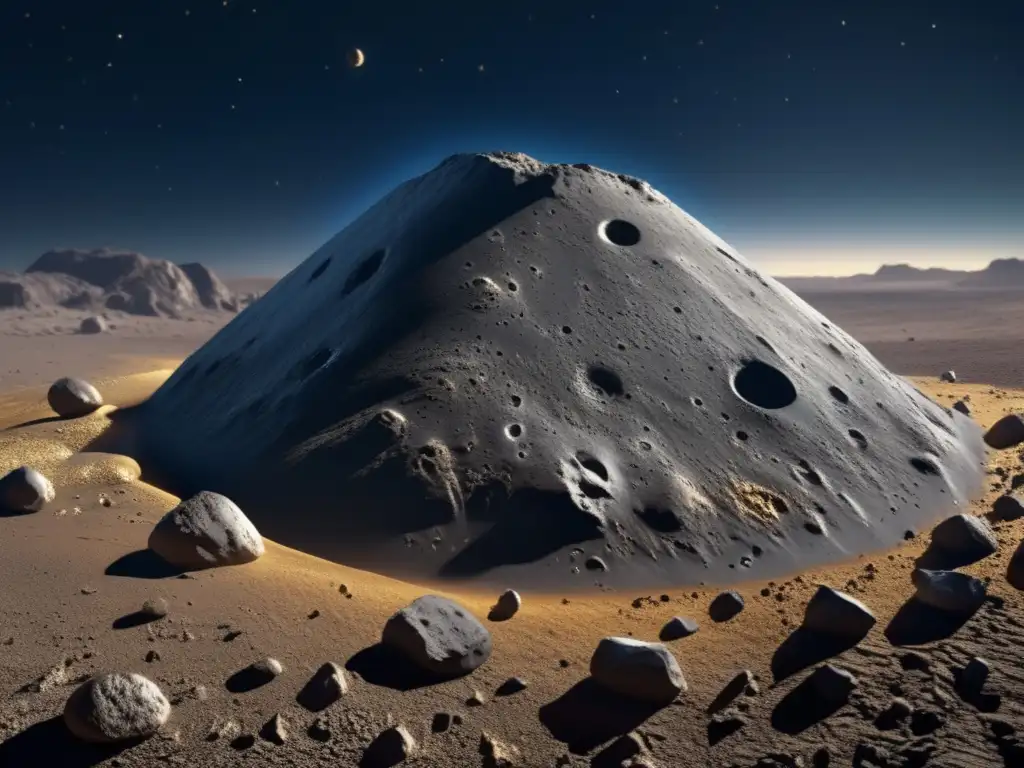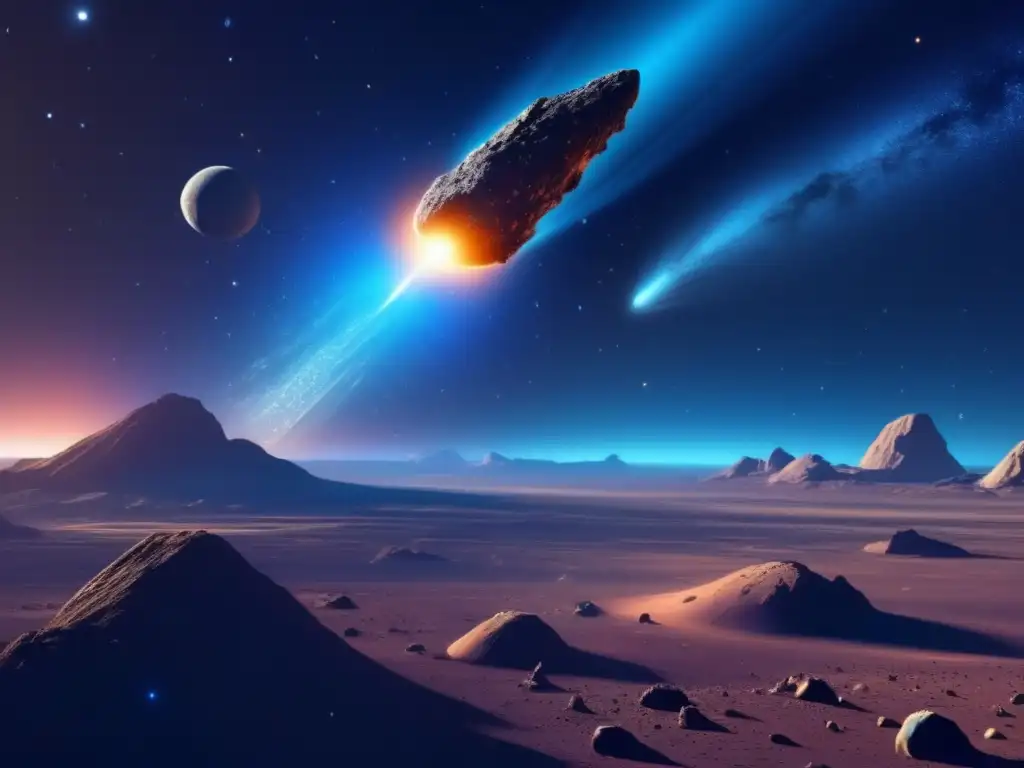The Origins Of Life: Could The Answer Lie In Asteroids?

Introduction
The mystery of how life began on Earth has been a question that has puzzled scientists for years. While there are many theories about how life originated, none of them have been confirmed. However, new studies suggest that asteroids could hold the key to unlocking this mystery. In this article, we will explore the possibility that asteroids were instrumental in the origin of life on Earth.
Asteroids and Extraterrestrial Life

The Building Blocks of Life
Scientists have discovered that many asteroids contain amino acids, the building blocks of life. Amino acids are organic compounds that are used to form proteins, which are essential for life. It is believed that asteroids are remnants from the formation of our solar system and that they contain a wealth of information about the conditions that existed at that time.
In 2010, the Stardust spacecraft found that the amino acid glycine was present in samples from the tail of comet Wild 2. This was the first definitive detection of an extraterrestrial amino acid in a sample returned to Earth. The discovery of glycine on the comet supported the theory that comets and asteroids may have played a role in the origin of life on Earth.
Panspermia: The Theory of Life from Space
Panspermia is the idea that life exists throughout the universe and that it can be transported from one planet to another through comets, asteroids, and other space debris. This theory suggests that asteroids could have brought the first living organisms to Earth.
In recent years, scientists have discovered that microorganisms can survive in extreme conditions such as those found on asteroids and comets. One example is the tardigrade, a microscopic animal that can survive extreme heat, cold, radiation, and even the vacuum of space.
The panspermia theory suggests that these organisms could have hitched a ride on an asteroid and survived the journey to Earth. Once here, they could have evolved into the first living organisms on our planet.
Impact Craters and the Formation of Life
Another theory about the role of asteroids in the origin of life is that impact craters could have created the conditions necessary for life to form. When an asteroid collides with a planet, the impact can create a shock wave that generates high pressure and temperature conditions.
Scientists have found that these conditions can create amino acids and other organic compounds, which are essential building blocks for life. It is possible that the impact of asteroids on Earth could have created the conditions necessary for life to form.
Asteroids and the Search for Extraterrestrial Life

The Study of Near-Earth Objects
The study of near-Earth objects (NEOs) has become increasingly important in recent years as scientists continue to search for signs of extraterrestrial life. NEOs are asteroids and comets that orbit the Sun and come close to Earth's orbit. They are of particular interest because they are relatively easy to study and could provide valuable information about the composition of asteroids and comets.
Several missions have been launched to study NEOs, such as NASA's OSIRIS-REx mission to the asteroid Bennu and JAXA's Hayabusa2 mission to the asteroid Ryugu. These missions will provide valuable data about the composition of asteroids and help to further our understanding of their potential role in the origin of life.
The Search for Biosignatures
One of the main goals of studying NEOs is to search for biosignatures, which are signs of life that can be detected in samples collected from asteroids or other celestial bodies. Biosignatures could include the presence of amino acids, DNA, or other organic compounds that are indicative of life.
Several upcoming missions will focus on searching for biosignatures in samples collected from asteroids and comets. For example, NASA's Lucy mission will study six Trojan asteroids in Jupiter's orbit to learn more about their composition and potential for hosting life.
Frequently Asked Questions

-
Could life have originated on an asteroid?
It is possible that life could have originated on an asteroid and then been transported to Earth through panspermia.
-
What evidence is there that asteroids contain amino acids?
The discovery of glycine on comet Wild 2 supports the theory that asteroids contain amino acids.
-
How do impact craters create the conditions necessary for life?
When an asteroid collides with a planet, the impact can create a shock wave that generates high pressure and temperature conditions. These conditions can create amino acids and other organic compounds, which are essential building blocks for life.
-
What are biosignatures?
Biosignatures are signs of life that can be detected in samples collected from asteroids or other celestial bodies.
-
What upcoming missions will focus on searching for biosignatures?
NASA's Lucy mission will study six Trojan asteroids in Jupiter's orbit to learn more about their composition and potential for hosting life.
Conclusion
The mystery of how life began on Earth has fascinated scientists for years. While there are many theories about the origin of life, new studies suggest that asteroids may hold the key to unlocking this mystery. The discovery of amino acids on comets and asteroids, as well as the possibility of panspermia, provides strong evidence that asteroids played a significant role in the formation of life.
As we continue to study near-Earth objects and search for biosignatures, we may gain a better understanding of the potential for life outside of our planet. The study of asteroids and their potential role in the origins of life is an exciting field of research and one that will continue to capture the imagination of scientists and the public alike.
Thank you for taking the time to read this article. We encourage you to share your thoughts in the comments section and to positively interact with www.asteroidrealm.com, whether by subscribing, sharing the article on social networks, or other forms of participation.
Additional Resources

- NASA: Panspermia
- Science Direct: Amino Acids in Meteorites
- Space.com: Search for Life in Solar System Focus on Near-Earth Asteroids
 Seeds Of Life: How Asteroids Could Be Spreading Life In The Universe
Seeds Of Life: How Asteroids Could Be Spreading Life In The Universe Asteroids: The Cosmic Cradles Of Life?
Asteroids: The Cosmic Cradles Of Life? Life Beyond Earth: The Potential Of Asteroids
Life Beyond Earth: The Potential Of AsteroidsIf you want to discover more articles similar to The Origins Of Life: Could The Answer Lie In Asteroids?, you can visit the Asteroids and Extraterrestrial Life category.
Leave a Reply

Articulos relacionados: